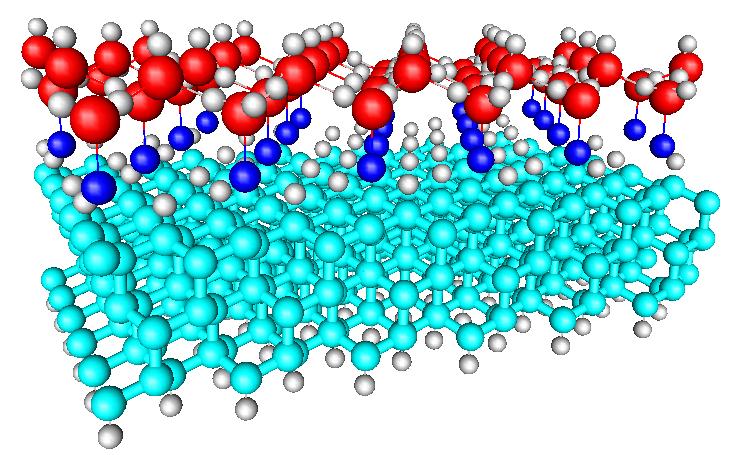纳米机械 Nano Mechanics

We are interested in energy utilization at the nanoscale, through exploiting the fundamental law of mechanics in the nano and surface-based small machines, such as molecular rotors, nanocars, nano water pump etc. The particular focus will be put on how do we understand and control the mechanical motions of miniature machines composed by only tens to hundreds of atoms. We illustrate two such examples below.
Nanomachines for electronic DNA sequencing
Recent success in detecting DNA conformational changes and hybridization by near-infrared fluorescence of CNTs or CNT-field-effect transistors also opens the possibility of DNA sequencing through electronic means. What is currently missing from all these attempts is a detailed understanding of the nature of the DNA-CNT interaction and its dependence on the nucleoside identity. Our recent study, based on realistic simulations and accurate quantum mechanical calculations, shows that this is an ideal system to perform tunneling experiments that can identify the DNA bases with 100% efficiency (Nano Lett. 7, 45).
In addition, we have investigated DNA base orientation on single-walled CNT through an interplay between ultraviolet absorption spectroscopy and time-dependent density functional theory calculations. We develop an approach to determine the orientation of DNA bases relative to the nanotube axis, which agrees well with the spectroscopic measurements. These findings provide a first step towards a complete understanding of the DNA-CNT interaction mechanism and could ultimately lead to ultrafast DNA sequencing (Nano Lett. 7, 2312).
Super-slippery surface
The extreme limits of wettability, superphilicity and superphobicity are immensely useful in practical applications such as self-cleaning surfaces and biomedic and nanofluidic devices. We have designed biocompatible, robust, superphilic diamond substrates guided by principles identified at the atomic scale. Such materials and devices are very useful to study biological processes in the laboratory which mimic living cells, and to a variety of applications including sensors, transport, heat transfer, and drug delivery (PRL97, 036107).

